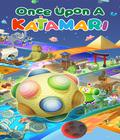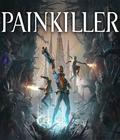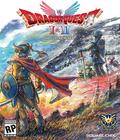The Walking Dead: Saints & Sinners launched four months ago for VR headsets on PC with some notable success. Despite a few flaws, it was recognized as an immersive and fun zombie survival game with interesting combat mechanics. As with similar titles, it was uncertain if it would find its way to PSVR given the hardware limitations. On May 5, a PSVR port dropped out of nowhere to bring the full experience to PS4. While this shadow release seemed odd, the result is surprisingly strong. The PSVR version of TWD:SS is a also fun but flawed experience, but I got hooked nonetheless.
While there are nods to the universe, Saints & Sinners isn't really a "Walking Dead" experience. It would have worked just as well without the name attached. We impersonate The Tourist, an outsider coming into the city of New Orleans in search of The Reserve, which is a rumored military bunker filled to the brim with food, weapons, and other resources. The game kicks off with us traveling into the city by boat to meet another survivor who seems to know how to find it. Of course, things go south, and before long, we are living alone in an old school bus in a graveyard and trying to survive on our own. We continue to search for The Reserve while trying to scavenge enough supplies to stay alive.
It's a serviceable story, so you can decide to skip the dialogue sections. The game hinges on two main quest lines, and some player decisions can impact the outcome of certain situations. Since all characters are shallow at best, the impact of your decisions can feel limited. With more content and exposure to interesting characters and personalities, this could've been more thought-provoking.
The main draw is clearly the gameplay, which is divided into your home base and the city, where you complete missions and collect crafting materials. While at your home base, you interact with the main quest-givers to get objectives or craft weapons and equipment. Time does not move forward at your base. When you venture into the city, you have a set amount of time, indicated on your wrist watch, to collect resources and complete your objectives. When the time is up, the church bells ring to stir up the walkers/zombies, causing each level to turn into a highly dangerous space that fills up with the undead. You can only travel to one of the eight locations in the city per day, so you have to make small decisions about what to tackle the next day. Do you go to an area where you need to complete a mission, or do you hunt for resources elsewhere? The number of walkers grows every day, while resources dwindle away, so your decisions do have consequences.
The core gameplay on the day trips is what makes the concept so satisfying to execute. The game is only playable via Move controllers and can only be played with full locomotion, so teleportation or other means of moving are not supported; bear that in mind if you get motion sick. There are a few comfort options, but it's not the most extensive selection I have seen. Both hands can be used freely and are used for combat and inventory management. The game uses an inventory system similar to other VR games of its caliber, where certain parts of your body are reserved to store key items.
Even with the relatively spotty tracking that PSVR sometimes has, the system works pretty well. Grabbing over your right shoulder can store a two-handed weapon, while your backpack inventory can be grabbed over your left shoulder. The left chest holds a flashlight, the right your notebook with maps and objectives, and your hips have two areas to store one-handed weapons. Grabbing knives or guns from your hips or backpack feels snappy and responsive most of the time. As for picking up things, everything snaps to your hands from a distance with a satisfying rumble and is stored just as quickly by throwing it over your shoulder.
The situations are frequent enough to become annoying, but overall, it works pretty well. In about 90% of my time with the game, I was able to execute the actions intuitively and, most importantly, without any issue. There are instances where tracking did fail me, such as dropping a weapon to the ground instead of storing it and, in some situations, spending 20 seconds trying to pick up an item from the ground without accidentally grabbing an item on my hip. It's certainly a game best played standing, since these issues cropped up more aggressively when sitting.
When out and about in the city, make sure you're geared up with firearms and knives. Although you can use both weapon types against anyone you meet (even quest NPCs), you often use firearms against human opponents and bladed weapons against the undead. Each area usually spans a few streets and blocks, making them rather small but open. This is not a full open-world game, but there are a few decently sized levels that are designed to feel open for experimentation and exploration. While most houses are off limits, each area has a few buildings that we can enter and search for loot. This is the most important part of the experience, since you aren't superhuman, even though it can feel that way.
As we roam around the city, we encounter walkers and humans alike. The human factions tend to leave you alone if you don't intrude on their turf — as long as you don't encounter murderous death squads. Walkers are slow and easy to take on one at a time, but once they gather in numbers, they can be problematic. The game has a very satisfying physics system that allows us to get up close and personal to zombies. That usually means grabbing a head with one hand and plunging a weapon into it with your other hand. The game simulates weight and force by doing so, and you really need to put some effort into braining a zombie. Everything feels like you are actually grabbing and killing walkers and other beings with your bare hands.
It's gruesome and brutal, but it's also satisfying and open to experimentation. What makes the combat system so satisfying is that you can likely kill enemies in as many ways as you can think of, like sticking an arrow into a zombie before shooting it, and breaking off a glass bottle and stabbing a zombie with it. These are very tame examples, but if it looks like you can use it in a certain way, you often can. That's what makes the combat feel fresh and interesting, even though the principles stay the same throughout the game. Even after putting 20 hours into Saints & Sinners, beheading a walker with a katana and throwing it into another's face still makes me feel as badass as any game ever managed to.
Tracking can make this exercise slightly frustrating, though. Since your own body is completely rendered in this world, it can be easy to get stuck in the environment with your hands and weapons when you're too close to an object, especially when you're trying to crouch behind something for cover. It's a possible death sentence since it'll make you vulnerable and distracted. Two-handed weapons also suffer from this, since you need to grab them just the right way to hit your opponent. Bigger melee weapons felt useless since they cost a lot of stamina, rarely hit like you want them to, and don't do more damage than using knives or a gun. They look pretty brutal, but that's about it.
Since TWD:S&S is a survival game at heart, you have to deal with more than just combat and scavenging. You can get the most out of an area by searching buildings, which can be infested with zombies or defended by a human faction. We have to keep an eye on our health and stamina, the latter of which is vital for combat and running. As we use stamina, our maximum available stamina decreases, so the longer we go without healing, the less stamina we have at our disposal. There are items in the world that restore stamina — often by lowering maximum health. You may also stumble upon infected zombies that make you sick and permanently take up to half of your maximum health (until you're healed). This can be punishing since your character starts coughing when your maximum health falls too low, a sound that can alert nearby enemies. In short, the game keeps you vigilant. There were multiple instances when it got me in stressful situations that I barely escaped, but those experiences stuck with me until the end. This gets even worse if you don't vanish before the bells roll and a zombie swarm hunts you down.
It's generally fun to be in these areas, since they work very well and adhere to their own rules. Any noise attracts enemies, so using guns and explosives is often a last resort. Zombies attack other humans just as they would attack you, and killing a human without destroying the brain inevitably creates another zombie. There are even small climbing sections and passages that grant additional routes to get into buildings and a few random encounters. In any area, we may meet other survivors who are asking for help or demanding it at gunpoint. If it weren't for the unconvincing human NPC models, voice acting, and story, this could've been miles better. As it is, the sections are fun to play but feel limited as you spend more time in them. As far as the concept goes, later areas do a decent job of keeping you entertained until the end of the story.
On the technical side, tracking issues may crop up, but the game is in overall great shape, especially since it's running on a console that was released over six years ago. Everything in your immediate surroundings is sufficiently sharp, especially documents and your notebook, which are the sharpest I've ever seen in VR. That deteriorates as you get further away from objects; things get noticeably softer in the distance, with an extra layer of fog obscuring anything that's too far away. The biggest issue is the pop-in of detail and assets, which isn't very subtle; you stop noticing it at some point, but it's always there. Entire buildings and cars will turn from muddy surfaces to detailed objects within a radius of two meters (six feet) around you, and the floor can take several seconds to load when you start an area.
Another obscure issue that we ran into was when we went to sleep and ended the game the next day, which corrupted our save file once. Loading the previous state fixed this issue permanently, but an online search shows that it's not a rare issue, so hopefully it'll get resolved at some point. Given the game and the platform it's on, I'd go as far as to say that I find the effort and execution to be commendable. It's the full experience with comparably few alterations to make it work on PSVR, which by default makes S&S one of the prettier and more impressive games to play today.
The Walking Dead: Saints & Sinners is not a perfect game, but it's an incredibly fun one. With satisfying and brutal combat, open-ended areas to explore, and fun survival and crafting mechanics, the title is a blast to play. It may be removed from the quality it can reach on the PC, but this is the full experience and works surprisingly well. No matter the sacrifices and minor annoyances, I kept coming back to the game long after I was done with it. I've spent more time in the headset for S&S than I have with many other games. Even though it's late in the PS4 life cycle, Saints & Sinners is a standout title.
Score: 8.6/10
More articles about The Walking Dead: Saints & Sinners











 The Walking Dead: Saints & Sinners is a VR game where you must make gut-wrenching choices and find out who you are in their fight for survival against not just walkers, but the constant threats of violence, disease, and famine.
The Walking Dead: Saints & Sinners is a VR game where you must make gut-wrenching choices and find out who you are in their fight for survival against not just walkers, but the constant threats of violence, disease, and famine.




























